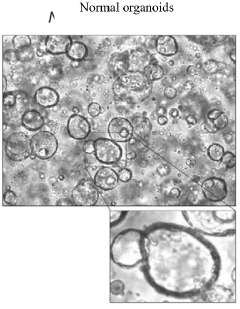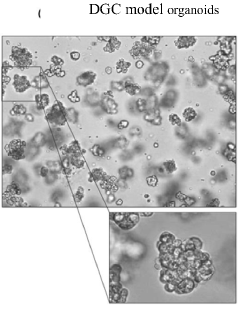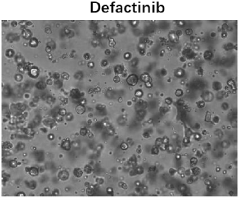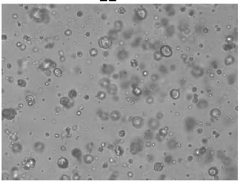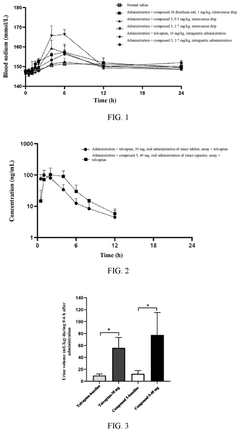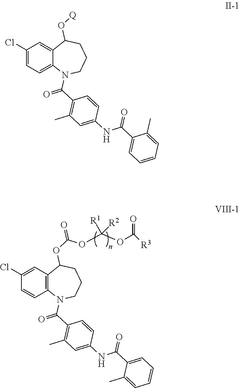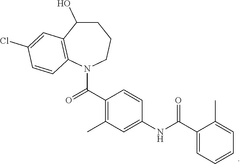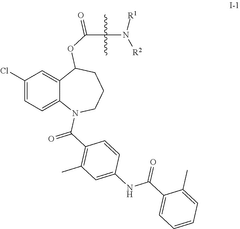Tautomerization Intermediates in Organocatalysis
JUL 29, 20259 MIN READ
Generate Your Research Report Instantly with AI Agent
Patsnap Eureka helps you evaluate technical feasibility & market potential.
Tautomerization Background and Research Objectives
Tautomerization, a fundamental process in organic chemistry, has gained significant attention in the field of organocatalysis over the past few decades. This phenomenon involves the rapid interconversion between structural isomers, known as tautomers, which differ in the position of a proton and a π bond. The study of tautomerization intermediates in organocatalysis has emerged as a crucial area of research, offering insights into reaction mechanisms and potential avenues for catalyst design and optimization.
The historical development of tautomerization research can be traced back to the late 19th century, with early observations of keto-enol equilibria. However, it was not until the mid-20th century that the importance of tautomerization in organic reactions began to be fully appreciated. The advent of modern spectroscopic techniques and computational methods has since revolutionized our understanding of these processes, allowing for the detection and characterization of short-lived intermediates.
In the context of organocatalysis, tautomerization plays a pivotal role in numerous reaction pathways. Organocatalysts, which are small organic molecules capable of accelerating chemical reactions, often rely on tautomerization steps to activate substrates or stabilize transition states. The interplay between tautomerization and catalysis has led to the development of novel synthetic methodologies and the discovery of more efficient and selective catalysts.
The primary objectives of research on tautomerization intermediates in organocatalysis are multifaceted. Firstly, there is a pressing need to elucidate the precise mechanisms by which tautomerization influences catalytic cycles. This involves identifying and characterizing transient intermediates, which can provide valuable insights into reaction kinetics and selectivity. Secondly, researchers aim to develop new strategies for controlling tautomerization processes to enhance catalyst performance and expand the scope of organocatalytic reactions.
Another key goal is to explore the potential of tautomerization-based organocatalysts in asymmetric synthesis. By leveraging the dynamic nature of tautomeric equilibria, chemists seek to create chiral environments that can induce high levels of enantioselectivity in product formation. This has significant implications for the pharmaceutical industry, where the synthesis of enantiomerically pure compounds is of paramount importance.
Furthermore, the research aims to bridge the gap between experimental observations and theoretical predictions. Advanced computational methods are being employed to model tautomerization processes and predict the behavior of catalytic systems. The integration of experimental and computational approaches is expected to accelerate the discovery of new catalysts and reaction pathways.
Ultimately, the overarching objective of this research is to harness the power of tautomerization in organocatalysis to develop more sustainable and efficient synthetic methods. By gaining a deeper understanding of these fundamental processes, scientists hope to design catalysts that operate under milder conditions, consume less energy, and generate fewer by-products, aligning with the principles of green chemistry and contributing to more environmentally friendly chemical processes.
The historical development of tautomerization research can be traced back to the late 19th century, with early observations of keto-enol equilibria. However, it was not until the mid-20th century that the importance of tautomerization in organic reactions began to be fully appreciated. The advent of modern spectroscopic techniques and computational methods has since revolutionized our understanding of these processes, allowing for the detection and characterization of short-lived intermediates.
In the context of organocatalysis, tautomerization plays a pivotal role in numerous reaction pathways. Organocatalysts, which are small organic molecules capable of accelerating chemical reactions, often rely on tautomerization steps to activate substrates or stabilize transition states. The interplay between tautomerization and catalysis has led to the development of novel synthetic methodologies and the discovery of more efficient and selective catalysts.
The primary objectives of research on tautomerization intermediates in organocatalysis are multifaceted. Firstly, there is a pressing need to elucidate the precise mechanisms by which tautomerization influences catalytic cycles. This involves identifying and characterizing transient intermediates, which can provide valuable insights into reaction kinetics and selectivity. Secondly, researchers aim to develop new strategies for controlling tautomerization processes to enhance catalyst performance and expand the scope of organocatalytic reactions.
Another key goal is to explore the potential of tautomerization-based organocatalysts in asymmetric synthesis. By leveraging the dynamic nature of tautomeric equilibria, chemists seek to create chiral environments that can induce high levels of enantioselectivity in product formation. This has significant implications for the pharmaceutical industry, where the synthesis of enantiomerically pure compounds is of paramount importance.
Furthermore, the research aims to bridge the gap between experimental observations and theoretical predictions. Advanced computational methods are being employed to model tautomerization processes and predict the behavior of catalytic systems. The integration of experimental and computational approaches is expected to accelerate the discovery of new catalysts and reaction pathways.
Ultimately, the overarching objective of this research is to harness the power of tautomerization in organocatalysis to develop more sustainable and efficient synthetic methods. By gaining a deeper understanding of these fundamental processes, scientists hope to design catalysts that operate under milder conditions, consume less energy, and generate fewer by-products, aligning with the principles of green chemistry and contributing to more environmentally friendly chemical processes.
Market Demand for Organocatalysis Applications
The market demand for organocatalysis applications has been steadily growing over the past decade, driven by the increasing focus on sustainable and environmentally friendly chemical processes. Organocatalysis, which utilizes small organic molecules as catalysts, offers several advantages over traditional metal-based catalysis, including lower toxicity, reduced environmental impact, and often lower costs.
In the pharmaceutical industry, organocatalysis has gained significant traction due to its potential in asymmetric synthesis, a crucial aspect of drug development. The ability to selectively produce single enantiomers of chiral compounds is highly valued, as it can lead to more effective and safer drugs. This has resulted in a growing demand for organocatalysts in the production of active pharmaceutical ingredients (APIs) and fine chemicals.
The agrochemical sector has also shown increasing interest in organocatalysis applications. As regulations on pesticide and herbicide use become more stringent, there is a push towards developing more environmentally friendly and selective crop protection agents. Organocatalysis offers a promising avenue for the synthesis of complex agrochemical molecules with improved efficacy and reduced environmental impact.
In the polymer and materials science field, organocatalysis has opened up new possibilities for the synthesis of biodegradable polymers and advanced materials. This aligns with the growing consumer demand for sustainable products and the push towards a circular economy. The ability to control polymer architecture and functionality through organocatalytic processes has attracted attention from both academia and industry.
The flavors and fragrances industry has also begun to explore organocatalysis as a means to produce natural-like compounds more efficiently and sustainably. This is in response to the increasing consumer preference for natural and clean-label products in the food and personal care sectors.
As research on tautomerization intermediates in organocatalysis advances, it is expected to further expand the scope and efficiency of organocatalytic reactions. This could potentially unlock new applications in areas such as green chemistry, biofuel production, and the synthesis of advanced electronic materials.
However, challenges remain in scaling up organocatalytic processes for industrial applications. The market demand is driving research efforts to develop more robust and recyclable organocatalysts, as well as to optimize reaction conditions for large-scale production. As these challenges are addressed, the market for organocatalysis applications is projected to continue its growth trajectory across various industrial sectors.
In the pharmaceutical industry, organocatalysis has gained significant traction due to its potential in asymmetric synthesis, a crucial aspect of drug development. The ability to selectively produce single enantiomers of chiral compounds is highly valued, as it can lead to more effective and safer drugs. This has resulted in a growing demand for organocatalysts in the production of active pharmaceutical ingredients (APIs) and fine chemicals.
The agrochemical sector has also shown increasing interest in organocatalysis applications. As regulations on pesticide and herbicide use become more stringent, there is a push towards developing more environmentally friendly and selective crop protection agents. Organocatalysis offers a promising avenue for the synthesis of complex agrochemical molecules with improved efficacy and reduced environmental impact.
In the polymer and materials science field, organocatalysis has opened up new possibilities for the synthesis of biodegradable polymers and advanced materials. This aligns with the growing consumer demand for sustainable products and the push towards a circular economy. The ability to control polymer architecture and functionality through organocatalytic processes has attracted attention from both academia and industry.
The flavors and fragrances industry has also begun to explore organocatalysis as a means to produce natural-like compounds more efficiently and sustainably. This is in response to the increasing consumer preference for natural and clean-label products in the food and personal care sectors.
As research on tautomerization intermediates in organocatalysis advances, it is expected to further expand the scope and efficiency of organocatalytic reactions. This could potentially unlock new applications in areas such as green chemistry, biofuel production, and the synthesis of advanced electronic materials.
However, challenges remain in scaling up organocatalytic processes for industrial applications. The market demand is driving research efforts to develop more robust and recyclable organocatalysts, as well as to optimize reaction conditions for large-scale production. As these challenges are addressed, the market for organocatalysis applications is projected to continue its growth trajectory across various industrial sectors.
Current Challenges in Tautomerization Intermediate Detection
The detection of tautomerization intermediates in organocatalysis presents several significant challenges that hinder our understanding of reaction mechanisms and limit the development of more efficient catalytic systems. One of the primary difficulties is the transient nature of these intermediates. Tautomers often interconvert rapidly, making their isolation and characterization extremely challenging. The short-lived nature of these species requires advanced spectroscopic techniques with high temporal resolution to capture their fleeting existence.
Another major obstacle is the complexity of the reaction environments in which tautomerization occurs. Organocatalytic reactions often involve multiple components, including solvents, substrates, and catalysts, creating a complex milieu that can interfere with the detection of intermediates. This complexity can lead to signal overlap in spectroscopic analyses, making it difficult to distinguish the specific signals of tautomeric intermediates from those of other reaction components.
The sensitivity of tautomerization to reaction conditions poses an additional challenge. Factors such as temperature, pH, and solvent polarity can significantly influence the equilibrium between tautomeric forms. This sensitivity makes it challenging to study these intermediates under conditions that accurately reflect the actual reaction environment without perturbing the system.
Furthermore, the structural similarity between different tautomeric forms complicates their differentiation. Many tautomers have only subtle structural differences, such as the position of a proton, which can be difficult to discern using conventional analytical techniques. This similarity often requires the use of multiple complementary analytical methods to unambiguously identify and characterize tautomeric intermediates.
The potential for rapid proton exchange in protic solvents presents another significant hurdle. This exchange can obscure the detection of specific tautomeric forms, as the proton involved in tautomerization may be rapidly exchanging with the solvent. Consequently, researchers often need to employ aprotic solvents or develop specialized techniques to mitigate this issue, which may not always accurately represent the actual reaction conditions.
Lastly, the computational prediction of tautomeric equilibria and transition states remains challenging. While computational methods have advanced significantly, accurately modeling the energetics and dynamics of tautomerization in complex organocatalytic systems still presents difficulties. This challenge is particularly pronounced when dealing with systems involving multiple tautomeric forms or when considering the influence of the reaction environment on tautomerization processes.
Another major obstacle is the complexity of the reaction environments in which tautomerization occurs. Organocatalytic reactions often involve multiple components, including solvents, substrates, and catalysts, creating a complex milieu that can interfere with the detection of intermediates. This complexity can lead to signal overlap in spectroscopic analyses, making it difficult to distinguish the specific signals of tautomeric intermediates from those of other reaction components.
The sensitivity of tautomerization to reaction conditions poses an additional challenge. Factors such as temperature, pH, and solvent polarity can significantly influence the equilibrium between tautomeric forms. This sensitivity makes it challenging to study these intermediates under conditions that accurately reflect the actual reaction environment without perturbing the system.
Furthermore, the structural similarity between different tautomeric forms complicates their differentiation. Many tautomers have only subtle structural differences, such as the position of a proton, which can be difficult to discern using conventional analytical techniques. This similarity often requires the use of multiple complementary analytical methods to unambiguously identify and characterize tautomeric intermediates.
The potential for rapid proton exchange in protic solvents presents another significant hurdle. This exchange can obscure the detection of specific tautomeric forms, as the proton involved in tautomerization may be rapidly exchanging with the solvent. Consequently, researchers often need to employ aprotic solvents or develop specialized techniques to mitigate this issue, which may not always accurately represent the actual reaction conditions.
Lastly, the computational prediction of tautomeric equilibria and transition states remains challenging. While computational methods have advanced significantly, accurately modeling the energetics and dynamics of tautomerization in complex organocatalytic systems still presents difficulties. This challenge is particularly pronounced when dealing with systems involving multiple tautomeric forms or when considering the influence of the reaction environment on tautomerization processes.
Existing Methods for Studying Tautomerization Intermediates
01 Tautomerization in organic synthesis
Tautomerization plays a crucial role in organic synthesis, particularly in the formation of intermediates. This process involves the interconversion between structural isomers, which can significantly affect reaction pathways and product formation. Understanding and controlling tautomerization is essential for designing efficient synthetic routes and optimizing reaction conditions.- Tautomerization in organic synthesis: Tautomerization plays a crucial role in organic synthesis, particularly in the formation of intermediates. This process involves the interconversion between structural isomers, which can significantly influence reaction pathways and product formation. Understanding and controlling tautomerization is essential for designing efficient synthetic routes and optimizing reaction conditions.
- Tautomeric equilibrium in pharmaceutical compounds: Tautomerization is particularly important in pharmaceutical compounds, where different tautomeric forms can exhibit varying biological activities. The study of tautomeric equilibria in drug molecules is crucial for understanding their behavior in physiological conditions, predicting drug-target interactions, and optimizing drug formulations. This knowledge aids in the development of more effective and stable pharmaceutical products.
- Catalytic effects on tautomerization: Catalysts can significantly influence tautomerization processes, affecting the rate and equilibrium of interconversion between tautomers. The use of specific catalysts can promote the formation of desired tautomeric intermediates, enhancing reaction selectivity and yield. This approach is valuable in fine chemical synthesis and the production of complex organic molecules.
- Tautomerization in material science: Tautomerization phenomena are exploited in material science for the development of smart materials and molecular switches. The reversible nature of tautomerization allows for the creation of materials with switchable properties, such as color-changing pigments or responsive polymers. These materials have potential applications in sensors, displays, and other advanced technologies.
- Computational modeling of tautomeric intermediates: Advanced computational methods are employed to study tautomerization processes and predict the stability and reactivity of tautomeric intermediates. These computational approaches aid in understanding complex reaction mechanisms, designing new synthetic strategies, and optimizing reaction conditions. They are particularly valuable in cases where experimental observation of short-lived tautomeric intermediates is challenging.
02 Tautomeric equilibrium in pharmaceutical compounds
In pharmaceutical research, tautomeric equilibrium is a critical consideration for drug design and development. Tautomeric forms of a compound can exhibit different physicochemical properties, affecting drug absorption, distribution, and efficacy. Studying tautomerization intermediates helps in predicting drug behavior and optimizing molecular structures for improved therapeutic outcomes.Expand Specific Solutions03 Catalytic influence on tautomerization
Catalysts can significantly impact tautomerization processes by stabilizing specific intermediates or lowering energy barriers between tautomeric forms. This catalytic influence is crucial in controlling reaction selectivity and yield. Research in this area focuses on developing novel catalysts that can direct tautomerization towards desired products or intermediates.Expand Specific Solutions04 Spectroscopic analysis of tautomeric intermediates
Advanced spectroscopic techniques are employed to study tautomerization intermediates. These methods, including NMR, IR, and UV-Vis spectroscopy, allow researchers to observe and characterize transient species involved in tautomeric processes. Such analyses provide valuable insights into reaction mechanisms and help in identifying key intermediates in complex chemical transformations.Expand Specific Solutions05 Computational modeling of tautomerization
Computational chemistry plays a vital role in understanding tautomerization intermediates. Quantum mechanical calculations and molecular dynamics simulations are used to predict tautomeric equilibria, transition states, and reaction energetics. These computational approaches complement experimental studies and aid in the rational design of molecules with desired tautomeric properties.Expand Specific Solutions
Key Players in Organocatalysis Research
The research on tautomerization intermediates in organocatalysis is in a developing stage, with growing market potential and increasing technological maturity. The field is characterized by a mix of academic institutions and pharmaceutical companies driving innovation. Key players include China Petroleum & Chemical Corp., Pfizer Inc., and Sinopec Research Institute of Petroleum Processing, indicating a blend of industry giants and specialized research entities. The involvement of diverse organizations, from global pharmaceutical leaders to national research centers, suggests a competitive landscape with opportunities for both fundamental research and practical applications in drug discovery and chemical synthesis.
China Petroleum & Chemical Corp.
Technical Solution: China Petroleum & Chemical Corp. (Sinopec) has been actively researching tautomerization intermediates in organocatalysis, particularly focusing on their application in petroleum refining and petrochemical processes. Their approach involves developing novel organocatalysts that can facilitate tautomerization reactions in complex hydrocarbon mixtures. Sinopec has implemented advanced spectroscopic techniques, including in-situ NMR and time-resolved IR spectroscopy, to study the formation and behavior of tautomeric intermediates under industrially relevant conditions[1]. They have also developed computational models to predict tautomerization pathways and optimize catalyst design for specific applications in fuel production and chemical synthesis[3].
Strengths: Extensive industrial experience, access to large-scale testing facilities, and integration of research findings into practical applications. Weaknesses: May be limited by focus on petroleum-specific applications, potentially overlooking broader organocatalytic applications.
Pfizer Inc.
Technical Solution: Pfizer Inc. has been at the forefront of research on tautomerization intermediates in organocatalysis, particularly in the context of drug discovery and development. Their approach combines high-throughput experimentation with advanced computational modeling to explore tautomeric equilibria in potential drug candidates. Pfizer has developed proprietary algorithms to predict tautomer stability and interconversion rates, which are crucial for understanding drug-target interactions and pharmacokinetics[2]. They have also implemented cutting-edge analytical techniques, such as ultrafast spectroscopy and cryogenic NMR, to capture transient tautomeric species in organocatalytic reactions relevant to pharmaceutical synthesis[4]. Pfizer's research has led to the discovery of novel organocatalysts that can selectively promote desired tautomeric forms, enhancing the efficacy and stability of drug molecules[5].
Strengths: Strong integration of computational and experimental approaches, direct application to drug discovery pipeline. Weaknesses: Research may be primarily focused on pharmaceutical applications, potentially limiting broader impact in other fields of organocatalysis.
Innovative Techniques for Tautomer Characterization
Pyrimidine or pyridine derivative and medicinal use thereof
PatentPendingAU2022411461A1
Innovation
- A compound is developed that acts as a dual inhibitor of focal adhesion kinase (FAK) and Yes-associated protein (YAP), offering therapeutic potential for cancer, pulmonary arterial hypertension, and pathological angiogenesis by modulating the Hippo-YAP pathway.
Benzazepine compounds, preparation method therefor and pharmaceutical use thereof
PatentPendingUS20240309030A1
Innovation
- Development of novel benzazepine compounds with specific structural modifications, including various alkyl, cycloalkyl, and heterocyclyl substitutions, to enhance solubility and absorption, as represented by compounds of formulas I-1, II-1, III-1, IV-1, V-1, VI-1, VII-1, and VIII-1, and their pharmaceutically acceptable salts, which improve pharmacokinetic properties.
Environmental Impact of Organocatalytic Processes
Organocatalytic processes have gained significant attention in recent years due to their potential for environmentally friendly chemical synthesis. As these methods continue to evolve, it is crucial to assess their environmental impact comprehensively. The use of organic molecules as catalysts offers several advantages over traditional metal-based catalysts, including reduced toxicity and improved sustainability.
One of the primary environmental benefits of organocatalytic processes is the reduction in metal waste. Traditional catalytic methods often rely on transition metals, which can be toxic and persist in the environment. Organocatalysts, being metal-free, eliminate this concern and contribute to cleaner chemical production. Additionally, many organocatalysts are derived from renewable resources, further enhancing their environmental credentials.
The energy efficiency of organocatalytic reactions is another important factor to consider. These processes often operate under milder conditions compared to metal-catalyzed reactions, potentially reducing energy consumption and associated greenhouse gas emissions. However, it is essential to conduct thorough life cycle assessments to quantify these benefits accurately.
Water usage and pollution are critical environmental concerns in chemical manufacturing. Organocatalytic processes frequently employ organic solvents, which can be problematic if not properly managed. However, recent advancements have shown promise in developing water-compatible organocatalysts and even aqueous organocatalytic systems, potentially reducing water pollution and improving overall process sustainability.
The recyclability and reusability of organocatalysts play a crucial role in their environmental impact. While some organocatalysts can be easily recovered and reused, others may degrade or become less effective over time. Improving catalyst stability and developing efficient recycling methods are key areas of research that could significantly enhance the environmental profile of these processes.
Biodegradability is another important aspect to consider. Many organocatalysts are based on natural products or their derivatives, which may be more readily biodegradable than synthetic metal complexes. This characteristic could lead to reduced environmental persistence and lower long-term ecological impacts.
As research on tautomerization intermediates in organocatalysis progresses, it is essential to consider the environmental implications of these specific processes. Tautomerization reactions often involve proton transfer, which can potentially be carried out under mild conditions with minimal waste generation. Understanding these mechanisms could lead to the development of even more environmentally benign catalytic systems.
In conclusion, while organocatalytic processes offer numerous environmental advantages, continued research and development are necessary to fully realize their potential for sustainable chemistry. Balancing reaction efficiency, catalyst recyclability, and overall process sustainability remains a key challenge in this field.
One of the primary environmental benefits of organocatalytic processes is the reduction in metal waste. Traditional catalytic methods often rely on transition metals, which can be toxic and persist in the environment. Organocatalysts, being metal-free, eliminate this concern and contribute to cleaner chemical production. Additionally, many organocatalysts are derived from renewable resources, further enhancing their environmental credentials.
The energy efficiency of organocatalytic reactions is another important factor to consider. These processes often operate under milder conditions compared to metal-catalyzed reactions, potentially reducing energy consumption and associated greenhouse gas emissions. However, it is essential to conduct thorough life cycle assessments to quantify these benefits accurately.
Water usage and pollution are critical environmental concerns in chemical manufacturing. Organocatalytic processes frequently employ organic solvents, which can be problematic if not properly managed. However, recent advancements have shown promise in developing water-compatible organocatalysts and even aqueous organocatalytic systems, potentially reducing water pollution and improving overall process sustainability.
The recyclability and reusability of organocatalysts play a crucial role in their environmental impact. While some organocatalysts can be easily recovered and reused, others may degrade or become less effective over time. Improving catalyst stability and developing efficient recycling methods are key areas of research that could significantly enhance the environmental profile of these processes.
Biodegradability is another important aspect to consider. Many organocatalysts are based on natural products or their derivatives, which may be more readily biodegradable than synthetic metal complexes. This characteristic could lead to reduced environmental persistence and lower long-term ecological impacts.
As research on tautomerization intermediates in organocatalysis progresses, it is essential to consider the environmental implications of these specific processes. Tautomerization reactions often involve proton transfer, which can potentially be carried out under mild conditions with minimal waste generation. Understanding these mechanisms could lead to the development of even more environmentally benign catalytic systems.
In conclusion, while organocatalytic processes offer numerous environmental advantages, continued research and development are necessary to fully realize their potential for sustainable chemistry. Balancing reaction efficiency, catalyst recyclability, and overall process sustainability remains a key challenge in this field.
Computational Modeling of Tautomerization Mechanisms
Computational modeling has become an indispensable tool in understanding tautomerization mechanisms in organocatalysis. These models provide valuable insights into the energetics, kinetics, and structural changes associated with tautomeric transformations. Density Functional Theory (DFT) calculations are widely employed to investigate the potential energy surfaces of tautomerization reactions, allowing researchers to identify stable intermediates and transition states.
One of the key advantages of computational modeling is its ability to explore reaction pathways that may be challenging to observe experimentally. For instance, ab initio molecular dynamics simulations can capture the dynamic nature of tautomerization processes, revealing transient intermediates and their lifetimes. These simulations often employ advanced sampling techniques, such as metadynamics or umbrella sampling, to overcome energy barriers and explore rare events.
Machine learning approaches have recently emerged as powerful tools for predicting tautomerization propensities and equilibrium constants. By training on large datasets of known tautomeric pairs, these models can rapidly screen potential tautomers and estimate their relative stabilities. This is particularly useful in drug discovery, where tautomerization can significantly impact a compound's pharmacological properties.
Quantum mechanical/molecular mechanical (QM/MM) methods have proven invaluable for modeling tautomerization in complex environments, such as enzyme active sites. These hybrid approaches allow for the accurate treatment of the tautomerizing moiety while considering the influence of the surrounding protein matrix. Such models have provided crucial insights into the role of tautomerization in catalytic mechanisms and substrate recognition.
Solvent effects play a critical role in tautomerization processes, and computational models have evolved to address this complexity. Implicit solvent models, such as the polarizable continuum model (PCM), offer a computationally efficient way to account for bulk solvent effects. For more detailed treatments, explicit solvent molecules can be included in the calculations, capturing specific solute-solvent interactions that may stabilize particular tautomeric forms.
Recent advancements in computational hardware and software have enabled the application of high-level quantum chemical methods to tautomerization studies. Coupled cluster calculations, for example, can provide benchmark-quality energetics for small to medium-sized systems, serving as reference data for the development and validation of more approximate methods.
One of the key advantages of computational modeling is its ability to explore reaction pathways that may be challenging to observe experimentally. For instance, ab initio molecular dynamics simulations can capture the dynamic nature of tautomerization processes, revealing transient intermediates and their lifetimes. These simulations often employ advanced sampling techniques, such as metadynamics or umbrella sampling, to overcome energy barriers and explore rare events.
Machine learning approaches have recently emerged as powerful tools for predicting tautomerization propensities and equilibrium constants. By training on large datasets of known tautomeric pairs, these models can rapidly screen potential tautomers and estimate their relative stabilities. This is particularly useful in drug discovery, where tautomerization can significantly impact a compound's pharmacological properties.
Quantum mechanical/molecular mechanical (QM/MM) methods have proven invaluable for modeling tautomerization in complex environments, such as enzyme active sites. These hybrid approaches allow for the accurate treatment of the tautomerizing moiety while considering the influence of the surrounding protein matrix. Such models have provided crucial insights into the role of tautomerization in catalytic mechanisms and substrate recognition.
Solvent effects play a critical role in tautomerization processes, and computational models have evolved to address this complexity. Implicit solvent models, such as the polarizable continuum model (PCM), offer a computationally efficient way to account for bulk solvent effects. For more detailed treatments, explicit solvent molecules can be included in the calculations, capturing specific solute-solvent interactions that may stabilize particular tautomeric forms.
Recent advancements in computational hardware and software have enabled the application of high-level quantum chemical methods to tautomerization studies. Coupled cluster calculations, for example, can provide benchmark-quality energetics for small to medium-sized systems, serving as reference data for the development and validation of more approximate methods.
Unlock deeper insights with Patsnap Eureka Quick Research — get a full tech report to explore trends and direct your research. Try now!
Generate Your Research Report Instantly with AI Agent
Supercharge your innovation with Patsnap Eureka AI Agent Platform!
